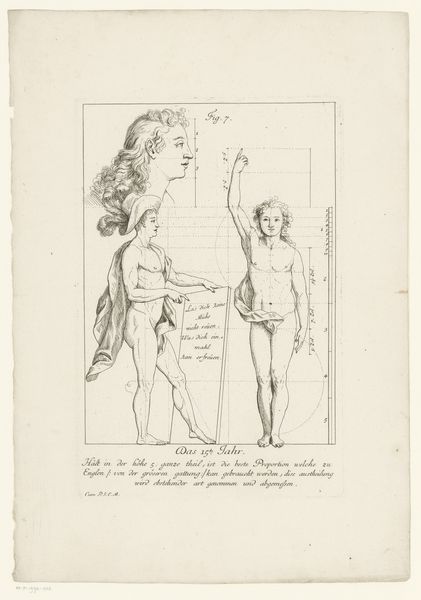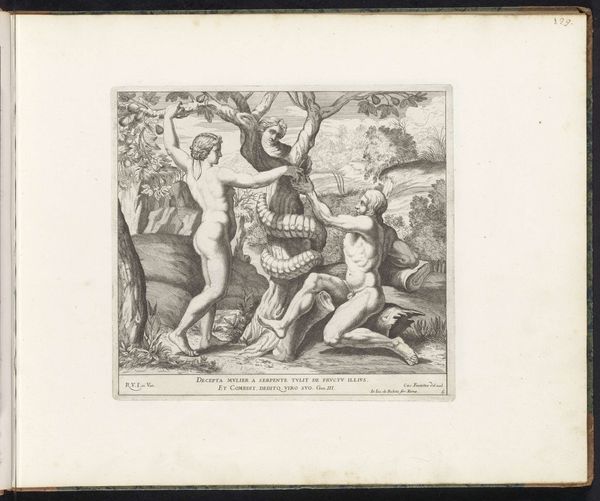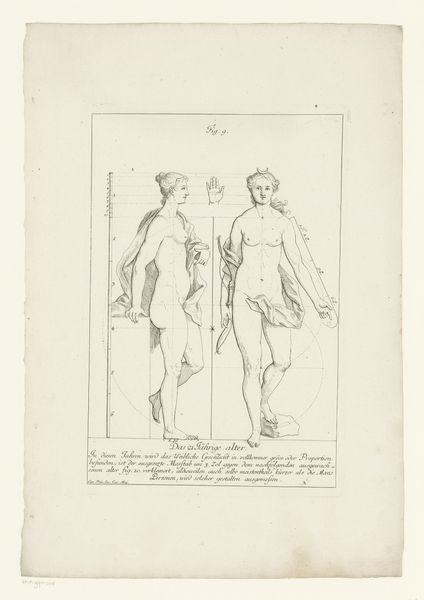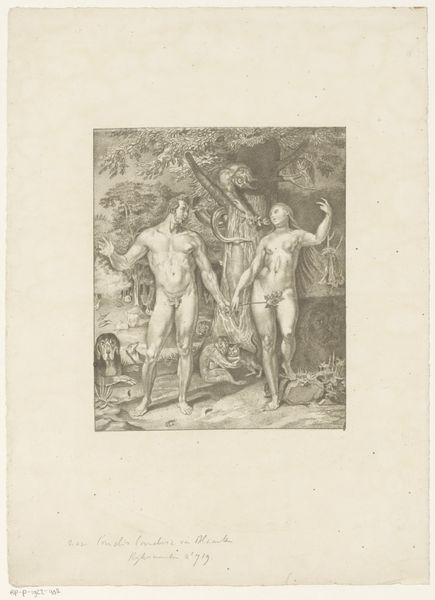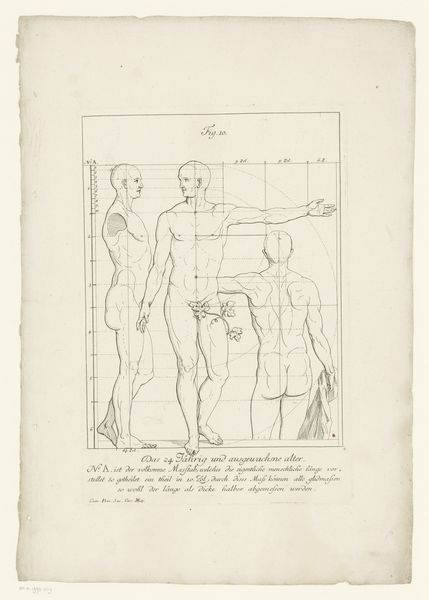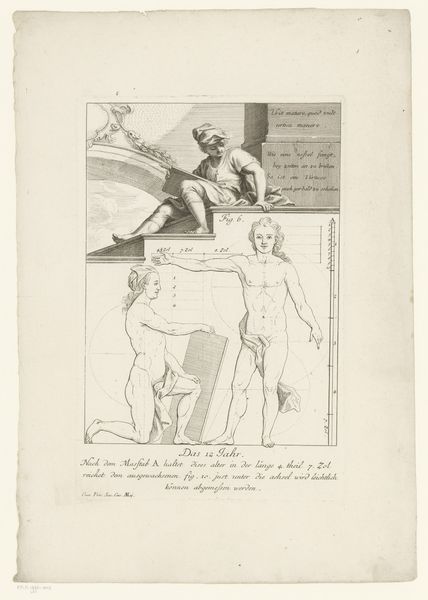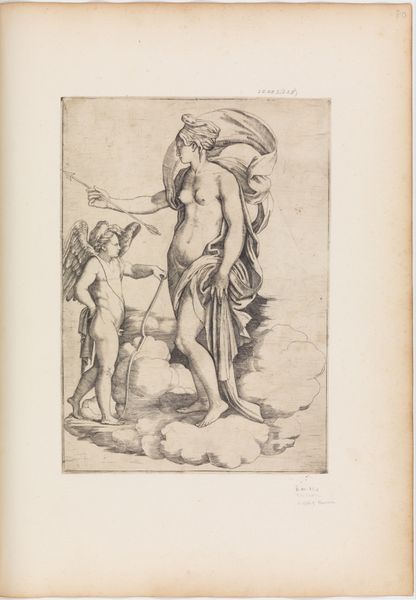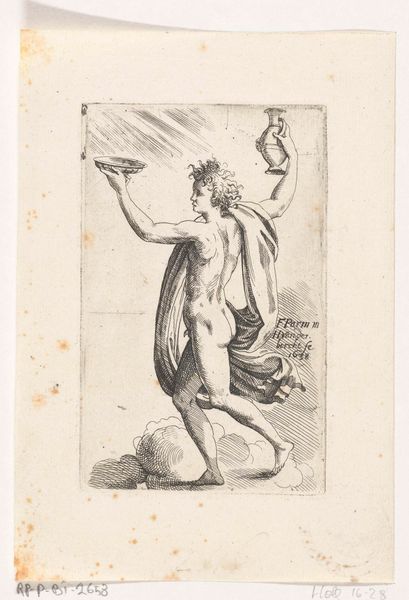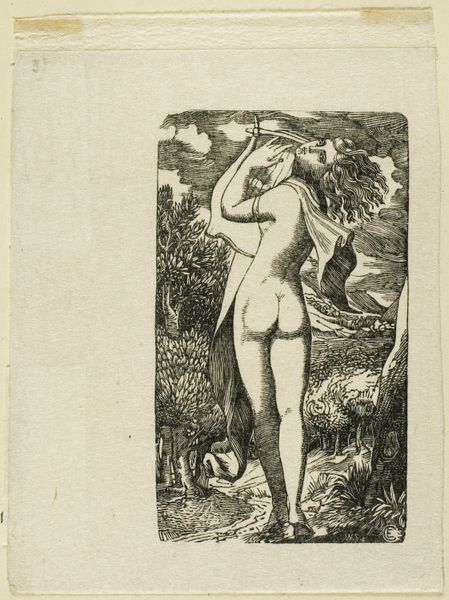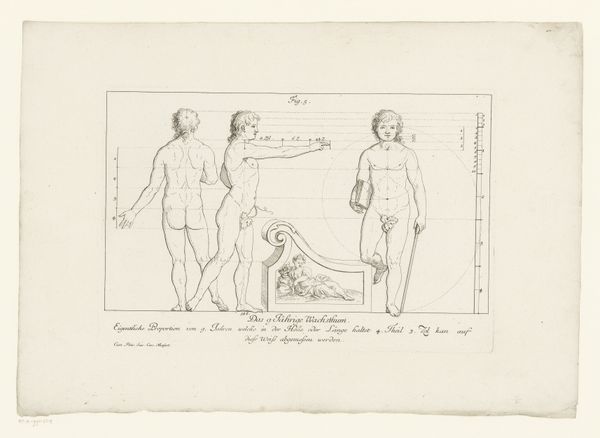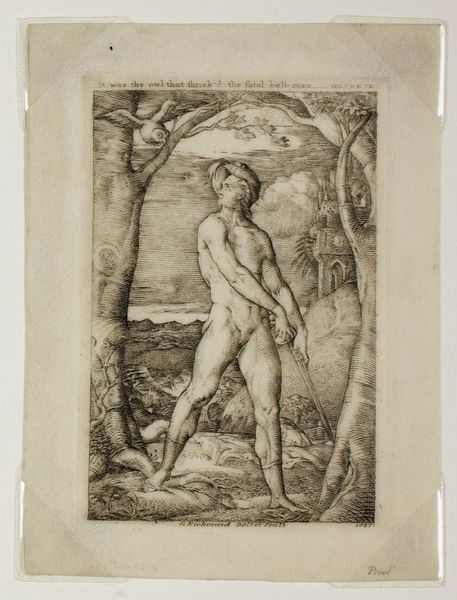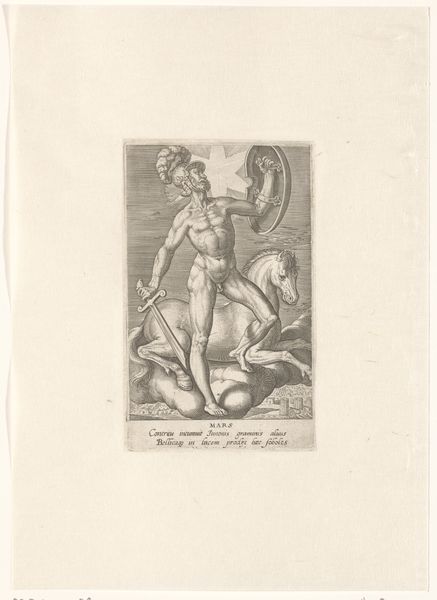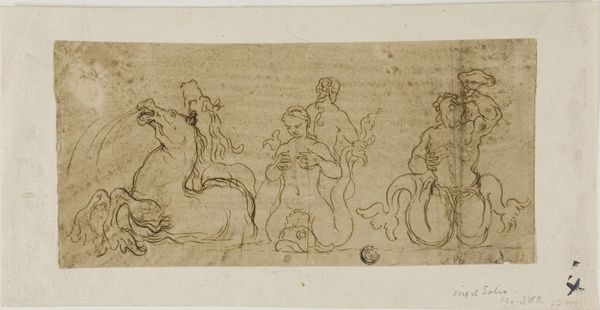
Drie aanzichten van een achttienjarig mannelijk lichaam en Mercurius 1723
0:00
0:00
drawing, print, engraving
#
portrait
#
drawing
#
baroque
# print
#
figuration
#
line
#
history-painting
#
academic-art
#
nude
#
engraving
Dimensions: height 316 mm, width 208 mm
Copyright: Rijks Museum: Open Domain
Curator: This drawing, created around 1723 by Hieronymus Sperling, is titled "Drie aanzichten van een achttienjarig mannelijk lichaam en Mercurius"—"Three Views of an Eighteen-Year-Old Male Body and Mercury." It's currently held at the Rijksmuseum. What strikes you first about this engraving? Editor: The composition feels quite academic, almost clinical, but I'm also struck by the contrast between the earthbound figure and Mercury floating ethereally above. It gives a sense of reaching beyond the purely physical. Curator: Indeed. The stark linearity of the engraving emphasizes the geometry and anatomical precision. Look at the grid system overlaid on two of the figures – Sperling clearly emphasizes ideal proportion. Semiotics here reveal his attention to form. Editor: Absolutely, and that reflects the prevailing artistic values of the time. Academic art sought to codify beauty according to rational principles and idealized forms derived from classical antiquity. Mercury, a symbol of speed and communication, presides as if bestowing divine approval on this pursuit. Curator: I’d agree, especially if we consider it in the light of artistic training. This print, created as an engraving, could have acted as an instructive model. What's crucial is how line becomes a means for measuring ideal forms of representation, turning to the body into an almost mechanical object of production, in that era’s historical context. Editor: That's fascinating. Viewing it in that context makes me see how such a work can tell us about both the aspirational aesthetics and institutional methods for their replication. The figures, rather than existing autonomously as aesthetic achievements, take their meaning as artifacts reflecting and forming particular social, pedagogic and creative structures. Curator: It's that interplay that I find so captivating, personally. This piece really shows the way that, despite seeming unemotional from its appearance, close attention makes a fascinating intersection for examining art history and theory! Editor: I concur completely! Considering these things in combination makes for such a rewarding viewing experience.
Comments
No comments
Be the first to comment and join the conversation on the ultimate creative platform.
